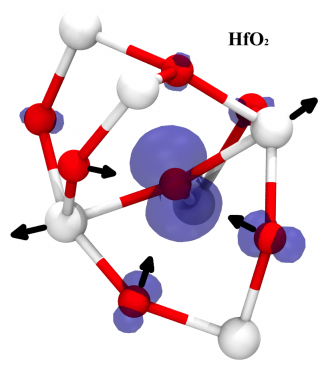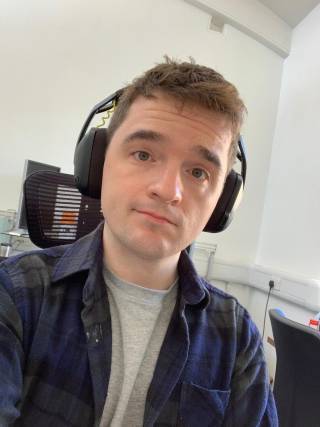HOME | MEMBERS | RESEARCH | PUBLICATIONS | LINKS |
About Me

Research
My main area of research to date has been using density functional theory to investigate defects in semiconductors, mainly amorphous HfO2. HfO2 is a commonly used dielectric in CMOS devices, serving as a high-k replacement of SiO2. Defects in HfO2 are known to be related to device longevity and failure, and therefore the modelling of defects is of great use for industrial applications.
One of the key defects which are modelled is the polaron. A polaron is a quasiparticle composed of an electron (or hole) coupled to the crystal lattice. The electron sits in a localised state, and this localisation causes strong polarisation of the lattice, which in turn creates a potential well which stabalises the localisation of the electron. Thus the electron is stabalised by a potential well of its own creating. Polaron states can sometimes be thought of as `trapped' electrons. My particular research in HfO2 has been the investigation of intrinsic traps, that is, traps which occur within the pure structure itself, rather than at other defect sites.
Also of interest to me has been the study of oxygen vacancies in HfO2. Oxygen vacancies can trap both electrons and holes in HfO2, and the presence and generation of vacancies is believed to be linked to the conductive filament forming mechanism in Resistive RAM (ReRAM) devices. I have recently been modelling the process of oxygen vacany generation via the creation of Frenkel defects. In particular, I have been focussing on the role that polarons and bipolarons have to play in the process of Frenkel defect formation in amorphous HfO2.
 Close
Close





